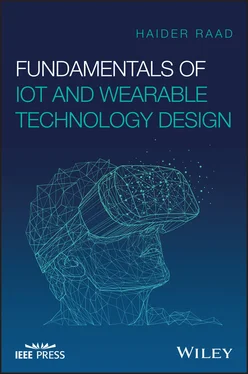
Figure 1.8 Fitbit Surge smart watch fitness tracker.
Source: Photo courtesy of Fitbit©.
Google released the consumer version of Glass in 2013 amid much fanfare, but it failed to gain commercial success. The Glass also faced serious criticism due to concerns that its use could violate current privacy laws. In 2017, Google launched the Glass Enterprise Edition after deciding that the Glass was better suited to workers who need hands‐free access to information, such as in health care, manufacturing, and logistics. In 2019, Google has announced a new version of its Enterprise Edition which has an improved processor, camera, charging unit, and various other updates.
One can imagine a considerable number of applications this technology is capable of creating. In fact, the Glass is already being utilized in a number of areas once considered “futuristic.” For example, Augmedix, a San Francisco based company, developed a Glass app that allows physicians to livestream the patient visit. The company claims that electronic health record problems will be eliminated, and their system would possibly save doctors up to 15 hours a week.
In 2013, Rafael Grossmann was the first surgeon to demonstrate the use of Google Glass during a live surgical procedure. In the same year, the Glass was used by an Ohio State University surgeon to consult with another colleague, remotely.
Obviously, such technology could have a positive impact on the lives of people with disabilities. For example, one application is designed to enable parents to swiftly access sign language dictionary through voice commands in order to communicate effectively with their deaf children.

Figure 1.9 Explorer edition of Google Glass©.
Source: Photo courtesy of Google Inc.
Using a smart glass technology in the tourism and leisure industry, the experience of tourists could be substantially improved. Attractions and museum tours can be immensely enhanced by displaying text or providing audible information when recognizable buildings, sculptures, and artwork are detected. Users will also be able to capture photographs and videos more conveniently, i.e. via voice command or a wink of an eye. Another helpful application dedicated to break the language barriers when traveling provides instantaneous translation. Any text visible to the Glass field of view can be translated via voice commands ( Figure 1.9).
Boeing is using the Glass to help their assembly crew in the connecting aircraft wire harnesses, which is a very lengthy process that requires a high volume of paperwork. The crew now could have a hands‐free access to the needed information using voice commands.
Stanford University is conducting a breakthrough research dedicated to help autism patients read the emotions of others using the Glass by utilizing facial recognition software to determine the emotions expressed on the people's faces projected within the display.
In 2014, Novartis and Google X (now X) 5 started the testing of a smart contact lens in the field of telehealth. 6 The lens is equipped with a miniaturized glucose sensor that continuously tracks blood sugar levels through the diabetic patient's tears and communicates the data to a smartphone through a wireless module. In 2018, Verily (a former division of Google X) announced that the lens project has been dismissed due to the lack of correlation between blood glucose and tears ( Figure 1.10). However, competitors started to take advantage of Google's lens failures to work on developing their own smart eye wearables. For example, EPGLMed is working with Apple, to develop a smart lens that corrects vision on‐demand by changing the curvature of the lenses through a smartphone app.

Figure 1.10 Infographic photo of the Google Smart Lens©.
Source: Photo courtesy of Google Inc.
In summary, the applications of wearable technology are extremely powerful and they are evolving rapidly. It is crystal clear that this technology is here to stay.
While the IoT and wearable technology continue to transform our lives in the twenty‐first century, significant challenges that could stand in the way of realizing its full potential are coming to light. Below are the major challenges that require full attention:
Security is one of the cornerstones of the Internet and is the most significant challenge for IoT and wearable devices. The hacking of fitness trackers, security cameras, baby monitors, and other abuses has drawn the attention and serious concerns of major tech firms and government agencies across the world.
While security considerations are not new in the realm of information technology, the characteristics of many IoT and wearable technology deployments introduce new and unprecedented security challenges. Addressing these challenges and ensuring secure IoT and wearable products and services must be a top priority. As these technologies are becoming more pervasive and integrated into our daily lives, users need to be assured that these devices and associated data are secure from vulnerabilities such as cyber‐attacks and data exposure.
The more consequential shift in security will come from the fact that IoT and wearable technology will become more integrated into our daily activities. Concerns will no longer be limited to protecting our sensitive data and assets. Our own lives and health can become the target of malicious attacks.
This challenge is further amplified by other considerations such as the mass‐scale production of identical devices, the ability of some devices to be automatically paired with other devices, and the potential deployment of these devices in unsecure environments.
While many of the emerging IoT and wearable technologies are giving rise to a spectrum of new applications and innovative uses, as well as promising and attractive benefits, they also pose privacy concerns that are largely unexplored. In fact, a new research area concerning the security and privacy of these technologies has recently emerged. Additionally, the need for the majority of wearable devices and a good number of IoT systems to interact and share data with an access point (i.e. a smart watch to smartphone, medical monitoring device to a home server, smart bulb to an ambient home assistant) along with other sensors and peripherals would certainly create a new class of privacy and security hazards.
Some IoT and wearable devices deploy various sensors to collect a wide spectrum of biological, environmental, behavioral, and social information from and for their users. Clearly, the more these devices are incorporated into our daily lives, the greater the amount of sensitive information will be transported, stored, and processed by these devices, which also elevate privacy concerns.
Moreover, integrated voice recognition or monitoring features are continuously listening to conversations or video record activities and selectively transmit such potentially sensitive data to a cloud service for processing, which sometimes involves a third party. Handling and interacting with such information unveil legal and regulatory challenges facing data protection and privacy laws.
Читать дальше















